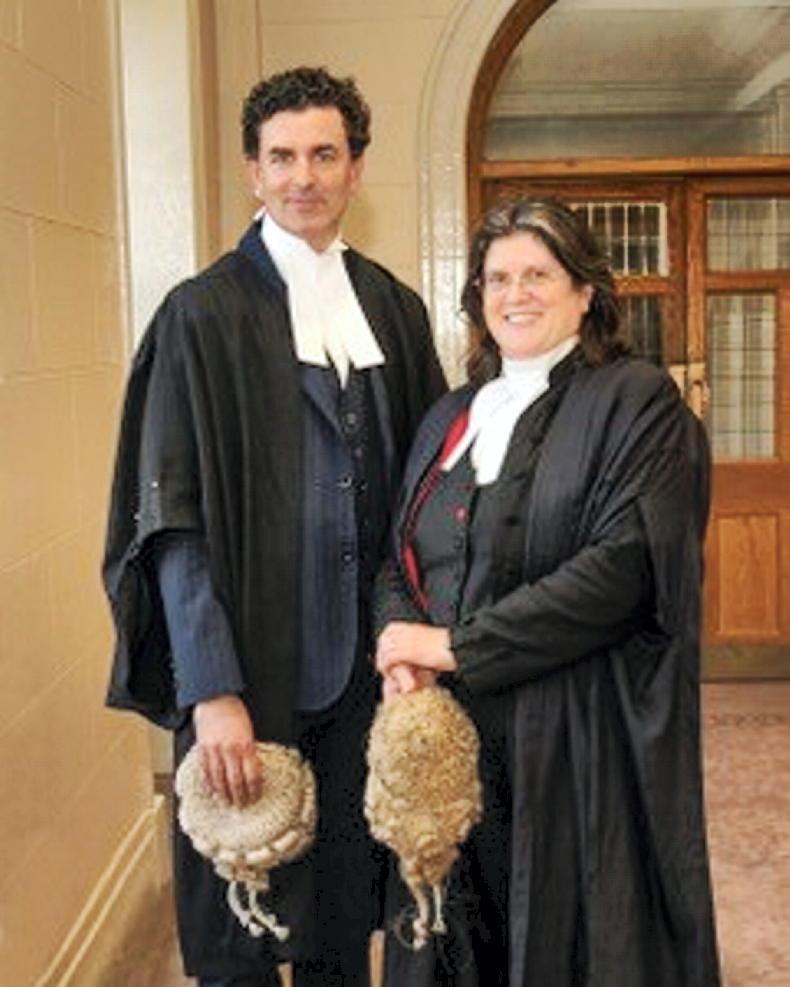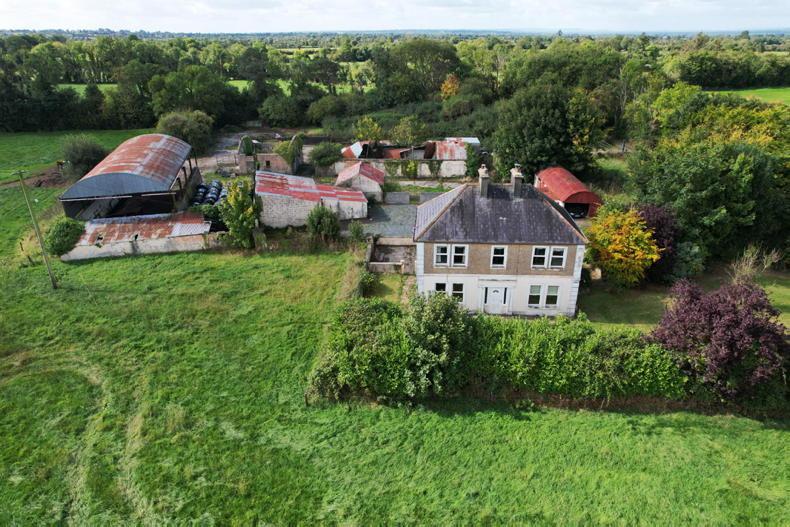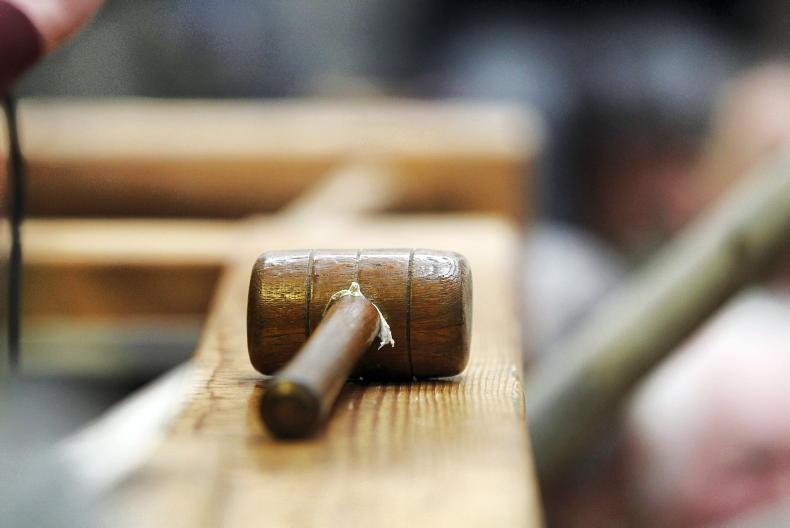It is anticipated that on some date in 2027, a ribbon will be cut on the M20, the motorway linking the cities of Cork and Limerick. Currently, just over 9km of motorway exists on the route, leaving a proposed 96km to complete – a task that will require lands.
This will be done by compulsory purchase order (CPO). Following confirmation of the M20’s preferred route, the process is now entering Phase 3, which is scheduled to last two years. This phase will produce a design report, an Environmental Impact Assessment Report (EIAR), and statutory process documentation.
Thereafter, with government approval in 2024, the Phase 4 formal planning submission will be made to An Bord Pleanála.
Questions being asked by landowners are: what will that mean for them and how can those affected ensure they are fully compensated?
Article 40.3.2 of the Constitution provides protection against an unjust attack on property rights, but these rights can be restricted when necessary for the “common good”. The concepts of the common good and social justice must therefore be considered in any decision on a CPO, and the key issue will be: to what extent can an acquisition for road building be justified by reference to the exigencies/demands of the “common good” or other public interest requirements?
For these reasons, the acquiring authority must expressly identify the purpose for which the land is required. That purpose cannot solely benefit private parties. There must be an element of public benefit, eg a safe M20 infrastructure.
Those affected are left with the right to claim compensation for the loss of their land. But questions can still arise as to the route and whether the taking of individual plots of land is justifiable or proportionate.
The compulsory purchase order
Power is given to many State authorities to acquire land for their statutory purpose, such as the ESB, Bord Gáis, etc. In the case of the M20, there will be a reliance on Section 52(1) of the Roads Act 1993.
The process in steps
The process can be somewhat protracted; however, typically the steps would include:
i. The relevant statutory body/authority decides to make a CPO of land(s) for an identified purpose.
ii. Those affected will be served with a Notice; newspaper notices will be published.
iii. The National Roads Authority (NRA) will notify every occupier/owner who they believe will be affected. At this stage, objections can be made, generally on legal or planning grounds.
iv. Next, if objections are lodged, a public enquiry may be held locally where landowners can voice concerns and objections, along with proposed alternatives and remedial measures. An Bord Pleanála can confirm, amend or reject the CPO without a public enquiry.
v. An Bord Pleanála formally confirms, amends or rejects the CPO. The details of the decisions are published in national and local newspapers.
vi. Where the objection period expires, the CPO becomes valid/official.
vii. A Notice to Treat is issued to those affected within 18 months of the CPO being made. The time can be extended by another 18 months for good and sufficient reasons.
viii. A Notice to Treat requests the submission of a detailed claim for compensation.
ix. The landowner(s) may be served with a Notice of Entry that gives the right to take possession. This may occur before compensation is agreed and money paid.
x. Claims for compensation are made within six months of the scheme being approved.
xi. The Property Arbitrator will assess compensation where there is no agreement. The costs of the arbitration are usually paid to the landowner.
xii. Thereafter, acquisition (by CPO) is made official and the monies are paid over.
Objecting
Only an affected landowner can object to the CPO. Typical objections include:
1. The land is not being acquired for the purpose of the statutory provision;
2. The acquiring authority has omitted an essential step or proof; or
3. The acquisition would be a disproportionate interference with the owner’s property rights.
The notice to treat
The Notice to Treat is an offer made by the acquiring authority to compensate the landowner for the land that is being acquired. It is not a binding contract, and no interest passes to the authority. However, it commences a relationship between the parties that is finalised once agreement is reached as to price or by arbitration.

Farmers welcomed the Kerry Greenway, but the use of CPOs to acquire the land did not go down well.
The acquiring authority has 18 months to serve the Notice and may do so at a time that is most financially advantageous to it. The value added to lands by any improvements made to the property by the landowner after the Notice to Treat will not be included in the compensation.
Lastly, the acquiring authority is entitled to withdraw the Notice to Treat within six weeks after the delivery of the claim and submission of title by the landowner, but is obliged to pay compensation for any loss as a result.
Factors
taken into
consideration
in valuing land
Market value
The High Court has accepted that “open value” or “market value” is a price that a voluntary seller would accept from a willing purchaser. The value is assessed by looking at prices achieved on the sale of comparable folio/lands or market trends. Importantly, the High Court also accepted that the art of valuation often involves subjective adjustments. There is no premium price that automatically attaches where the property is sought to be compulsory acquired.
Notably, the average open market price for farmland varies. Issues will arise on the cost of replacing the land taken, eg a plot of land of four hectares can often cost more per hectare than a block of land that is 44 hectares.
Disturbance and severance
Other heads of damages are recoverable. Factors with the M20 may include: the breaking up of farmland (holding), rendering the remaining land unusable or less suitable for current use, disturbance caused by noise and/or fumes, and disruption.
Compensation is also payable for the inconvenience and associated expenses of incidentals arising from the CPO, and for losses caused when land is severed (or divided and split) and the remaining land’s use is diminished. That said, there are limits. The total loss to the landowner should not be over-compensated due to the principle of equivalence in law. Further, disturbance claims for losses that have not occurred or will not occur in the future are not permitted. For example, a landowner cannot claim for the cost of a new cowshed if they have sold their herd.
Generally, disturbance covers losses incurred pursuant to one’s profession; depreciation in the value of any remaining property; compensation for damage to the physical structures; removal expenses; and conveyance costs if relocating. With farmland, disturbance includes damages or losses due to separation of the remaining fields; costs of enlarged routes; lost profits from sown lands that cannot be harvested; resettlement costs; legal/expert advice; farming downtime/loss of earnings during any resettlement period; and related matters. Note, a duty to mitigate losses arises where a Notice to Treat is served or anticipated and the claimant cannot recover for losses that are reasonably avoidable.
Arbitration
If there is no agreement on a final sum following the Notice to Treat after 14 days, either party can apply to the Land Values Reference Committee to have a property arbitrator appointed. The decision of the arbitrator on any factual question is final and binding on the parties.
The property arbitrator shall give reasons for their valuation to increase transparency, public confidence and consistency. Valuations may be reviewed on the perceived misconduct on the part of the arbitrator or on a question of law by the High Court.
What to do when served
with a notice to treat?
The best piece of advice is to engage a solicitor. Your solicitor is best placed to guide you through the whole process, drawing on their unique skills and resources. The process and legal principles underlying it, especially the heads of compensation, are complex and, save in the most straightforward case, do require a solicitor’s knowledge.
Where a landowner has legal representation, it takes away a lot of the stress and confusion; your solicitor and barrister will strive to get the best compensation for their client.

Tadhg Dorgan is a barrister who trained at King’s Inns, Dublin. A law graduate from UCC, he is also an accredited mediator from Harvard University. Maura McNally is a Senior Counsel and member of the Inner Bar. Prior to entering King’s Inns to train as a barrister, she read law at University College Galway and Warwick University. She was elected as Chair of the Council of the Bar of Ireland, the representative body’s second-ever female head.
Read more
Legal aspects in the breakdown of a farm partnership
Legal query: right of return of an infertile bull
It is anticipated that on some date in 2027, a ribbon will be cut on the M20, the motorway linking the cities of Cork and Limerick. Currently, just over 9km of motorway exists on the route, leaving a proposed 96km to complete – a task that will require lands.
This will be done by compulsory purchase order (CPO). Following confirmation of the M20’s preferred route, the process is now entering Phase 3, which is scheduled to last two years. This phase will produce a design report, an Environmental Impact Assessment Report (EIAR), and statutory process documentation.
Thereafter, with government approval in 2024, the Phase 4 formal planning submission will be made to An Bord Pleanála.
Questions being asked by landowners are: what will that mean for them and how can those affected ensure they are fully compensated?
Article 40.3.2 of the Constitution provides protection against an unjust attack on property rights, but these rights can be restricted when necessary for the “common good”. The concepts of the common good and social justice must therefore be considered in any decision on a CPO, and the key issue will be: to what extent can an acquisition for road building be justified by reference to the exigencies/demands of the “common good” or other public interest requirements?
For these reasons, the acquiring authority must expressly identify the purpose for which the land is required. That purpose cannot solely benefit private parties. There must be an element of public benefit, eg a safe M20 infrastructure.
Those affected are left with the right to claim compensation for the loss of their land. But questions can still arise as to the route and whether the taking of individual plots of land is justifiable or proportionate.
The compulsory purchase order
Power is given to many State authorities to acquire land for their statutory purpose, such as the ESB, Bord Gáis, etc. In the case of the M20, there will be a reliance on Section 52(1) of the Roads Act 1993.
The process in steps
The process can be somewhat protracted; however, typically the steps would include:
i. The relevant statutory body/authority decides to make a CPO of land(s) for an identified purpose.
ii. Those affected will be served with a Notice; newspaper notices will be published.
iii. The National Roads Authority (NRA) will notify every occupier/owner who they believe will be affected. At this stage, objections can be made, generally on legal or planning grounds.
iv. Next, if objections are lodged, a public enquiry may be held locally where landowners can voice concerns and objections, along with proposed alternatives and remedial measures. An Bord Pleanála can confirm, amend or reject the CPO without a public enquiry.
v. An Bord Pleanála formally confirms, amends or rejects the CPO. The details of the decisions are published in national and local newspapers.
vi. Where the objection period expires, the CPO becomes valid/official.
vii. A Notice to Treat is issued to those affected within 18 months of the CPO being made. The time can be extended by another 18 months for good and sufficient reasons.
viii. A Notice to Treat requests the submission of a detailed claim for compensation.
ix. The landowner(s) may be served with a Notice of Entry that gives the right to take possession. This may occur before compensation is agreed and money paid.
x. Claims for compensation are made within six months of the scheme being approved.
xi. The Property Arbitrator will assess compensation where there is no agreement. The costs of the arbitration are usually paid to the landowner.
xii. Thereafter, acquisition (by CPO) is made official and the monies are paid over.
Objecting
Only an affected landowner can object to the CPO. Typical objections include:
1. The land is not being acquired for the purpose of the statutory provision;
2. The acquiring authority has omitted an essential step or proof; or
3. The acquisition would be a disproportionate interference with the owner’s property rights.
The notice to treat
The Notice to Treat is an offer made by the acquiring authority to compensate the landowner for the land that is being acquired. It is not a binding contract, and no interest passes to the authority. However, it commences a relationship between the parties that is finalised once agreement is reached as to price or by arbitration.

Farmers welcomed the Kerry Greenway, but the use of CPOs to acquire the land did not go down well.
The acquiring authority has 18 months to serve the Notice and may do so at a time that is most financially advantageous to it. The value added to lands by any improvements made to the property by the landowner after the Notice to Treat will not be included in the compensation.
Lastly, the acquiring authority is entitled to withdraw the Notice to Treat within six weeks after the delivery of the claim and submission of title by the landowner, but is obliged to pay compensation for any loss as a result.
Factors
taken into
consideration
in valuing land
Market value
The High Court has accepted that “open value” or “market value” is a price that a voluntary seller would accept from a willing purchaser. The value is assessed by looking at prices achieved on the sale of comparable folio/lands or market trends. Importantly, the High Court also accepted that the art of valuation often involves subjective adjustments. There is no premium price that automatically attaches where the property is sought to be compulsory acquired.
Notably, the average open market price for farmland varies. Issues will arise on the cost of replacing the land taken, eg a plot of land of four hectares can often cost more per hectare than a block of land that is 44 hectares.
Disturbance and severance
Other heads of damages are recoverable. Factors with the M20 may include: the breaking up of farmland (holding), rendering the remaining land unusable or less suitable for current use, disturbance caused by noise and/or fumes, and disruption.
Compensation is also payable for the inconvenience and associated expenses of incidentals arising from the CPO, and for losses caused when land is severed (or divided and split) and the remaining land’s use is diminished. That said, there are limits. The total loss to the landowner should not be over-compensated due to the principle of equivalence in law. Further, disturbance claims for losses that have not occurred or will not occur in the future are not permitted. For example, a landowner cannot claim for the cost of a new cowshed if they have sold their herd.
Generally, disturbance covers losses incurred pursuant to one’s profession; depreciation in the value of any remaining property; compensation for damage to the physical structures; removal expenses; and conveyance costs if relocating. With farmland, disturbance includes damages or losses due to separation of the remaining fields; costs of enlarged routes; lost profits from sown lands that cannot be harvested; resettlement costs; legal/expert advice; farming downtime/loss of earnings during any resettlement period; and related matters. Note, a duty to mitigate losses arises where a Notice to Treat is served or anticipated and the claimant cannot recover for losses that are reasonably avoidable.
Arbitration
If there is no agreement on a final sum following the Notice to Treat after 14 days, either party can apply to the Land Values Reference Committee to have a property arbitrator appointed. The decision of the arbitrator on any factual question is final and binding on the parties.
The property arbitrator shall give reasons for their valuation to increase transparency, public confidence and consistency. Valuations may be reviewed on the perceived misconduct on the part of the arbitrator or on a question of law by the High Court.
What to do when served
with a notice to treat?
The best piece of advice is to engage a solicitor. Your solicitor is best placed to guide you through the whole process, drawing on their unique skills and resources. The process and legal principles underlying it, especially the heads of compensation, are complex and, save in the most straightforward case, do require a solicitor’s knowledge.
Where a landowner has legal representation, it takes away a lot of the stress and confusion; your solicitor and barrister will strive to get the best compensation for their client.

Tadhg Dorgan is a barrister who trained at King’s Inns, Dublin. A law graduate from UCC, he is also an accredited mediator from Harvard University. Maura McNally is a Senior Counsel and member of the Inner Bar. Prior to entering King’s Inns to train as a barrister, she read law at University College Galway and Warwick University. She was elected as Chair of the Council of the Bar of Ireland, the representative body’s second-ever female head.
Read more
Legal aspects in the breakdown of a farm partnership
Legal query: right of return of an infertile bull












SHARING OPTIONS